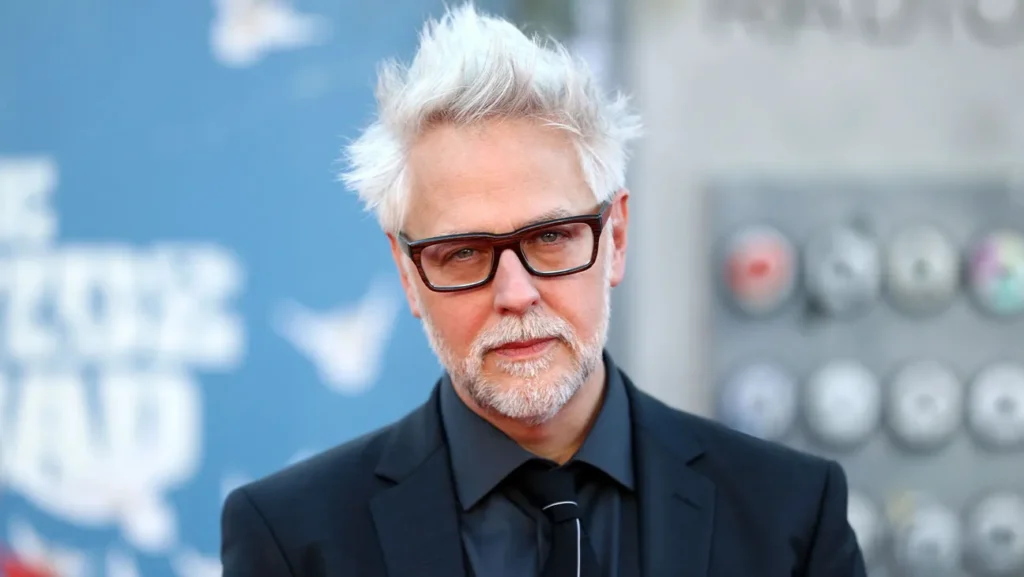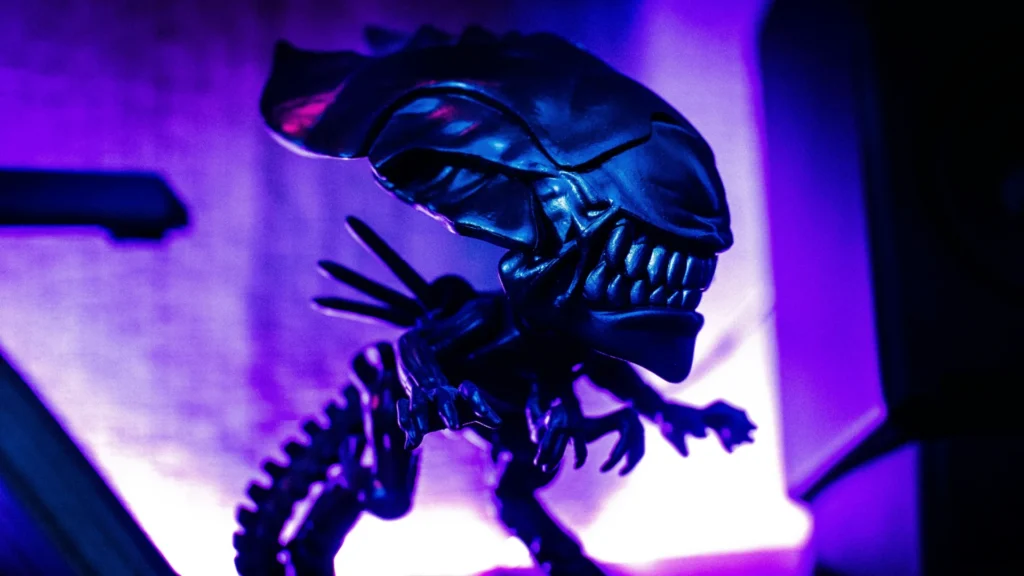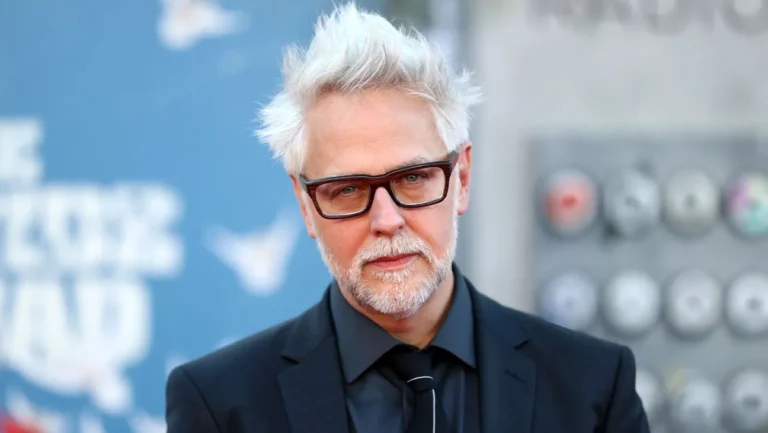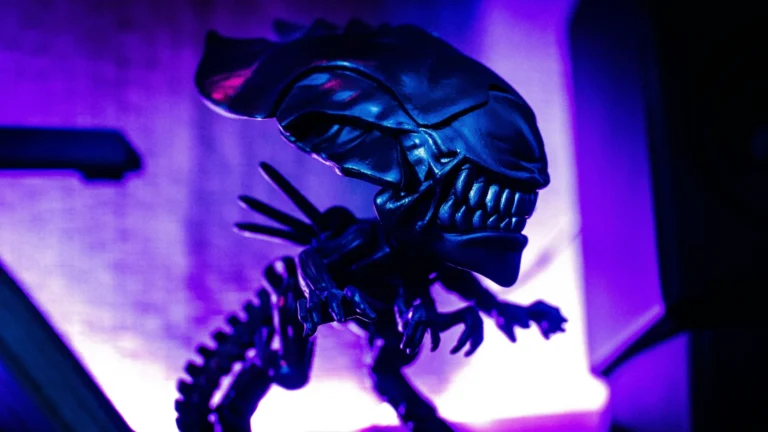Ever noticed those amazing anime characters who steal the show from the sidelines? Their unique personalities and special abilities fill gaps the main characters can’t.
The spotlight might shine on protagonists, but these hidden gems bring emotional depth that makes anime truly memorable. Characters like Faputa in Made in Abyss and Shizuku in Hunter x Hunter prove their worth at significant moments in the story.
We’ve put together a list of 15 underrated anime characters who deserve more attention. Their emotional battles, deep backstories, and character development often go unnoticed. Take Kyoko Sakura from Puella Magi Madoka Magica and Watari from Death Note – they show incredible depth that many viewers might miss in the anime world.
Faputa (Made in Abyss)

Image Source: Made in Abyss Wiki – Fandom
Faputa from Made in Abyss might look like just another strange creature in the series’ bizarre world at first. But this Princess of the Narehate has one of the most tragic backstories in anime history.
Faputa’s Tragic Origin Story
Irumyuui gave birth to Faputa as her last child, who came into existence through her mother’s final wish on the Cradle of Desire. All but one of Irumyuui’s previous children died, and Faputa now carries her mother’s wishes and vengeful emotions. She embodies the wrath and regret her mother felt after failing to protect her earlier children. Right after birth, Faputa showed her violent nature by destroying three Interference Units before she ran away.
Faputa’s Complex Character Development
Faputa started with primitive communication, speaking in third person with brief, hard-to-follow sentences. She built a deep connection with Gaburoon, an Interference Unit that became her guardian and taught her the abyssal language. Her bond with Reg became the most important part of her story – she claimed him as her property and showed clear distress when he couldn’t remember her.
The village battle changed Faputa. She declared, “Don’t decide for Faputa. What Value means is for Faputa to find”. This showed her growth from someone driven by inherited vengeance to a character creating her own destiny.
Why Faputa Deserves More Recognition in 2025
Faputa stands out as one of the most under appreciated anime characters because of her emotional depth. She seemed focused only on revenge at first, but her character grew more complex over time. Her story became “a one-woman story of revenge, isolation, and despair with layers of identity and value dilemmas”. Behind her fierce exterior, she showed moments of vulnerability and a deep need to connect.
Faputa’s Impact on the Made in Abyss Storyline
Faputa brought “a spiritual and emotional core to Made in Abyss” that previous arcs missed. Her existence challenged the 10-year old rules of the Abyss, showing that interactions with it could lead to more than just “losing humanity”. Through her character, the series dives into deeper questions about value, humanity, and the true nature of relics.
Watari (Death Note)

Image Source: Death Note Wiki – Fandom
A remarkable support system stands behind every great detective. In Death Note, Watari is that pillar of strength for L Lawliet, though casual viewers often overlook his contributions to the Kira investigation.
Watari’s Essential Role in L’s Investigation
Watari is more than L’s handler—he bridges the gap between the eccentric detective and the outside world. He aids all communications with law enforcement agencies as L’s only direct contact before the Task Force forms. He represents himself with a Cloister Black “W” on computer screens. His role goes way beyond the reach and influence of administrative duties:
- He proved his marksmanship by sniping Higuchi’s revolver to prevent suicide
- He provided specialised equipment and counterfeit identification for the Task Force
- He executed L’s strategic decisions and helped maintain the illusion of multiple Ls
In his final moments, Watari activated a kill-switch that erased all data at Task Force headquarters—a contingency plan L had asked him to implement if anything “strange” were to happen.
Watari’s Mysterious Background
The elderly gentleman we know as Watari is Quillsh Wammy, a successful British inventor who used his wealth to help others. He created Wammy’s House, an orphanage in Winchester, England, that specialised in gifted children. This place ended up becoming the birthplace of detective prodigies like L, Near, and Mello.
Wammy found L at age eight and saw his exceptional intelligence. He then turned his orphanage into a training ground for potential successors to L’s detective legacy. Their bond grew from mentor-student to something like father and son, with Watari becoming both a caretaker and professional support.
Why Watari is Criminally Underrated
Watari’s quiet strength works in L’s shadow, which is why many overlook him. His intelligence shows differently than L’s deductive reasoning—he excels in organisational genius, technological prowess, and operational expertise. His surprising combat skills and cool head under pressure make him much more than just a grandfather figure.
Yes, it is rare for underrated anime characters to get recognition, but Watari’s death draws nowhere near the attention that L’s does. This oversight ignores his substantial contributions to the investigation and his lifelong commitment to nurturing the world’s greatest detective minds.
Shizuku (Hunter x Hunter)

Image Source: Hunterpedia – Fandom
Among Hunter x Hunter’s cast of eccentric villains, Shizuku Murasaki stands out as the Phantom Troupe’s deceptively strong cleaner. She has round glasses and short hair. Her unassuming nature makes people overlook her, yet she has one of the series’ most versatile powers.
Shizuku’s Unique Abilities and Fighting Style
Shizuku’s Nen power lets her summon “Blinky,” a living vacuum cleaner that breaks typical combat rules. This everyday-looking tool has amazing abilities:
- Can suck up any non-living object, making it perfect to remove evidence
- Pulls blood from open wounds during fights
- Works as a melee weapon for direct attacks
Her battle with the Chimera Ant Pike shows how smart she is in combat. She ranks lower in physical strength compared to other Troupe members. Yet she makes up for it with clever thinking. She escaped Pike’s sticky web trap by taking off her clothes and used Blinky to drain his blood through carefully made wounds.
Shizuku’s Role in the Phantom Troupe
She became member #8 after Silva Zoldyck killed the previous one. Her main job involves “Cleanup” and “Recon” operations. She uses Blinky to get rid of evidence after missions. After the Yorknew City auction massacre, she quickly cleaned up all the blood, bodies, and other traces.
In spite of that, her calm nature hides her steadfast dedication to Chrollo Lucilfer and the Troupe’s values. She’s now on the Black Whale with Chrollo and Bonolenov to hunt down Hisoka. She knows Blinky won’t work against Hisoka’s Bungee Gum.
Why Shizuku Deserves More Attention from Anime Fans
A sharp mind lies beneath her forgetful personality. She surprised her teammates when she quickly figured out Chrollo’s fortune-telling poems. Her simple vacuum-based power shows unexpected depth in how she uses it—especially in her clever win against Pike.
Shizuku balances out the Troupe’s showier personalities perfectly. She stays calm and works quietly during chaos. This shows how underrated anime characters often help the most through subtle skills rather than flashy powers.
Kyoko Sakura (Puella Magi Madoka Magica)

Image Source: Madoka Magica Magia Exedra
Kyoko Sakura stands out as a complex anti-hero in Puella Magi Madoka Magica. Her rise from antagonist to selfless martyr creates one of anime’s most compelling character arcs. She’s easily recognised by her fiery red hair and a snack that never leaves her hand.
Kyoko’s Tragic Backstory
Life changed drastically for Kyoko after she contracted with Kyubey. She came from a poor family with a Protestant pastor father. Her wish seemed innocent enough – she wanted people to listen to her father’s teachings. The wish brought prosperity to her family until her father found out about its source. He spiraled into madness and believed his daughter had made a deal with the devil. This led to a horrific act that shaped Kyoko’s worldview. Her father murdered her mother and younger sister Momo before taking his own life. Kyoko remained the only survivor.
Kyoko started as Mami Tomoe’s idealistic apprentice. They fought together to protect people from witches and familiars. The loss of her family changed everything. She left this partnership and adopted a cynical philosophy that focused on self-preservation.
Kyoko’s Character Growth Throughout the Series
Episode 4 introduces Kyoko as a selfish, battle-hungry magical girl. She hunts witches only for grief seeds and criticises Sayaka who wastes magic on familiars. Their opposing ideologies lead to violent clashes.
A remarkable change occurs as Sayaka falls into despair. Kyoko sees her former self in Sayaka’s idealism. This recognition brings her back to her original values. Her journey culminates in a final sacrifice. She overloads her soul gem to create a massive explosion, making sure Sayaka-turned-witch doesn’t die alone. Her last words resonate deeply: “You’ve gotta focus on the one thing that means most to you, and protect it to the end.”
Why Kyoko is One of the Most Underrated Anime Characters
Several factors make Kyoko a standout among underrated anime characters:
- Her character arc shows remarkable depth as she moves from innocent idealist to cynical survivor to redemptive hero
- The theme of sacrifice finds its best expression through her character
- Her past shapes her actions without completely defining her
Main characters like Madoka and Homura often overshadow Kyoko despite her fully realised story. She ranks as the least popular of the five main magical girls in polls, yet her impact on the narrative runs deep. Her experience reflects the series’ core themes about hope, despair, and heroism’s true meaning.
Ling Yao (Fullmetal Alchemist: Brotherhood)

Image Source: Fullmetal Alchemist Wiki – Fandom
The ambitious twelfth prince of Xing, Ling Yao bursts into Fullmetal Alchemist: Brotherhood with a simple goal: to get immortality and claim his throne. Behind this straightforward quest lies one of the most underrated anime characters. His experience reshapes him from a power-seeking royal into a truly worthy leader.
Ling’s Journey and Character Development
Ling’s determination to get the Philosopher’s Stone seems selfish when he arrives in Amestris. His true motivations reveal a deeper purpose – he wants to protect his clan’s welfare and bring stability to Xing amid fierce rivalry between clans. His core belief that “a King is no King without his people” shows rare wisdom for his age.
Ling’s tactical flexibility stands out. He takes the bold risk of letting Greed possess his body – a sacrifice few would consider. This choice proves his understanding that noble goals sometimes need extreme measures.
Ling’s Relationship with Greed
Ling and Greed’s internal dynamic grows from a power struggle into a partnership based on mutual respect. The way they influence each other creates an interesting story. Greed discovers the value of friendship and loyalty from Ling, while Ling gets strength and a new viewpoint from Greed.
Their shared body creates one of anime’s most unique character dynamics. Both keep their distinct personalities yet grow together. By the time Greed sacrifices himself to save Ling, their bond exceeds mere cohabitation – it becomes true friendship.
Ling’s Impact on the FMA:B Story
Ling’s arrival expanded FMA:B’s world beyond Amestris. He brought Xing’s alkahestry and political complexities into focus. His presence added cultural dimensions and personal stakes to the conflict between homunculi and humans.
Why Ling Deserves More Recognition
Ling stands out among underrated anime characters because he shows positive ambition without losing moral integrity. His sacrifice for his people and growth through hardship make him worthy of more appreciation than most supporting characters in this beloved series.
Armin Arlert (Attack on Titan)

Image Source: Attack on Titan Wiki – Fandom
People often mistake Armin Arlert as just a sidekick in Attack on Titan. The truth is he serves as the strategic backbone of the Survey Corps. His brain power consistently saves humanity even though he lacks physical strength.
Armin’s Strategic Brilliance
His deep intelligence gives him the upper hand in strategic situations. He excels at creating successful battle plans because he knows how to think things through. The Survey Corps won many battles thanks to his planning. Here are his most notable achievements:
- He spotted Annie as the Female Titan by piecing together small clues
- He created the plan to use Eren’s hardening powers to seal Wall Maria
- He figured out that Reiner and Bertholdt were hiding inside the walls before they attacked
His talents go beyond tactical thinking. He knows how to persuade enemies and convince superior officers to follow his plans. His quick decisions under pressure are a great way to get results, which shows why everyone calls him the smartest member of the Survey Corps.
Armin’s Character Development
The series shows Armin’s journey from a boy who doubts himself to a confident military leader. He felt useless compared to his stronger friends at first, but learned to trust his mental abilities. His story concludes when he gets the Colossal Titan from Bertholdt, and he must settle his peaceful beliefs with his new destructive powers.
Why Armin is Overshadowed Despite His Importance
His brilliance stays in the shadows because we mostly see his work behind the scenes. Other characters grab attention through physical fights, while Armin’s strategic planning doesn’t have the same visual impact. He also rarely takes credit for his success because he’s modest by nature.
Armin’s Most Underrated Moments
The Battle of Shiganshina shows Armin’s most overlooked moment without doubt. He chose to burn alive as a distraction against Bertholdt’s Colossal Titan, showing both his tactical mind and selfless nature. He also proved his growth when he saved Jean by taking his first life, moving beyond just planning into making tough battlefield choices.
Mitsuba Sousuke (Toilet-Bound Hanako-kun)

Image Source: Hanako-kun Wiki Jibaku Shounen Hanako-kun Wiki – Fandom
Ghost photographer Mitsuba Sousuke stands out in Toilet-Bound Hanako-kun. His experience from an arrogant student to a complex supernatural entity shows the essence of lost potential.
Mitsuba’s Complex Character Arc
A tragic car accident ended Mitsuba’s life while he bought potatoes for his mother’s birthday curry. His time as a student at Kamome Academy revealed a defensive personality – vain, narcissistic, and often rude to others. Behind this facade lived a deeply insecure boy who couldn’t make real connections.
Death turned Mitsuba into a ghost. He first appeared at the school entrance as a silhouette and reached out to former classmates. They failed to recognise him. This rejection left him isolated until he met Kou Minamoto, which sparked a deep transformation.
Tsukasa’s “massacre” of Mitsuba led to an even more dramatic change. A new version emerged from weak spirits and a fragment of his original soul. This new Mitsuba (No.3) grapples with questions about his existence. His search for meaning offers one of the series’ most nuanced character studies.
Mitsuba’s Relationships with Main Characters
Mitsuba’s connection with Kou Minamoto is the life-blood of his story. He started by calling Kou “Hella-lame-traffic-safety-earring boy” but grew to see him as his only true friend. Their bond deepened through shared experiences and growth. Now Mitsuba can’t bring himself to dislike Kou, though he struggles to express these feelings openly.
His relationships reach beyond Kou. A complex dynamic exists with Hanako, whom he once feared. Fans now recognise many potential “ships” with Mitsuba, including pairings with Tsukasa, Nene, and others. This shows his surprising popularity despite limited screen time.
Why Mitsuba Deserves More Spotlight
Mitsuba shines among underrated anime characters through his authentic portrayal of teenage insecurity and identity struggles. His character appeals to viewers who know bullying or the challenge of fitting in.
His story offers rare, realistic LGBTQ+ representation in anime. His character arc reflects what many LGBTQ+ teens face – bullying for perceived “effeminacy” and developing defense mechanisms that isolate them further.
His storyline tackles deep questions about identity and existence. Can someone remain the same person after losing memories but keeping soul fragments? This philosophical depth makes him worthy of more recognition in 2025’s anime discussions.
Iroha Isshiki (My Teen Romantic Comedy SNAFU)

Image Source: OreGairu Wiki – Fandom
First-year student and reluctant student council president, Iroha Isshiki stands out in My Teen Romantic Comedy SNAFU as a character who hides her complexity behind a carefully built facade.
Iroha’s Multifaceted Personality
A shrewd, calculating mind lurks beneath Iroha’s “cute” exterior. She puts on an innocent image to get her way but rarely shows who she really is. Only Hachiman Hikigaya and Hayato Hayama see through her act. Hachiman sees her as “an uncute Komachi Hikigaya, better Minami Sagami, phony Meguri Shiromeguri, different Kaori Orimoto and inferior Haruno Yukinoshita.” He even calls her “the second most rotten person in the world” after himself.
Whatever image she projects, Iroha proves herself capable as both soccer club manager and student council president. She grows less mischievous and more selfless through the series, especially after she sees Hachiman’s genuine request.
Iroha’s Effect on the Main Characters
The Service Club welcomes Iroha as an “Honorary True Companion” after her introduction. She builds strong bonds with Hachiman. Their relationship runs on mutual understanding—they both share cynical worldviews and manipulative tendencies:
- They both use manipulation, though Hachiman leans toward machiavellian tactics while Iroha aims for quick wins
- They joke about becoming a househusband and rich man’s wife
- They can read between the lines of what each other says
Iroha treats Hachiman differently from others. She shows him real honesty and doesn’t care about his bad social status. She’s straightforward with him in a way she rarely is with anyone else.
Why Iroha is an Underappreciated Character
The layers beneath Iroha’s simple surface make her underrated. Fans often miss her vulnerable side—she admits she has few friends despite her social skills. Her words “I only have you Senpais” show the loneliness behind her confident front.
She also grows significantly throughout the series. She starts by reluctantly taking the student council presidency and ends up taking real pride in organising events.
Her contradictory nature makes her fascinating—she’s manipulative yet honest, self-serving yet caring. These complexities make her one of anime’s most true-to-life portrayals of teenage social dynamics. She deserves more recognition in 2025’s anime discussions.
Hiyori Sarugaki (Bleach)

Image Source: Bleach Wiki – Fandom
Small in size but huge in spirit, Hiyori Sarugaki stands out as the embodiment of fierce determination among the Visored in Bleach. She has a short fuse and violent streak that hide a character with unexpected depth and fighting skills that deserve more recognition.
Hiyori’s Background as a Visored
She served as lieutenant of the 12th Division under Captain Kirio Hikifune, someone she deeply respected. Later, she worked under Kisuke Urahara, though not by choice. Her life changed forever around 110 years ago after becoming a victim of Sōsuke Aizen’s Hollowfication experiments. Yoruichi Shihōin rescued her among other affected Shinigami, and she became a Visored.
Her deep hatred for both Shinigami and Humans shows through her constant anger. This tough exterior comes from being forced out of Soul Society and the trauma of Hollowfication that changed her life forever.
Hiyori’s Relationship with Shinji
Despite being tiny, she loves beating up Shinji Hirako. She smacks him with sandals, kicks him in the face, and shows zero respect. She even uses him as a human shield without thinking twice. This love-hate dynamic started back in her lieutenant days and stayed strong through their time as Visored.
But under all that hostility lies real affection. She tried to protect Shinji during her Hollowfication by telling him to keep away. Their bond showed most clearly after Gin Ichimaru cut her in half during the Aizen battle. As she fell into Shinji’s arms, she said sorry for losing control.
Hiyori’s Fighting Style and Abilities
As a Visored, she packs some serious combat skills:
- Expert Swordsmanship: She fights with raw aggression and unpredictable moves that channel her anger
- Enhanced Strength: She hits hard enough to damage tough opponents like Shinji and Ichigo
- Hollow Mask: Her mask looks skeletal with a big horn, and it took her 69 minutes to learn to use it—longer than any other Visored
- Cero: She shoots a steady red Cero beam from her mask’s mouth that works well against groups
Why Hiyori Deserves More Recognition in the Bleach Fandom
The casual viewer might miss Hiyori’s psychological depth. Her aggressive front hides deep insecurities and pain that likely come from feeling abandoned after Kirio Hikifune’s promotion.
She brings a raw edge to the Visored group. While others learned to cope, she keeps expressing their shared anger and sense of unfairness. Her brutal injury during the Aizen fight shows the heavy price of seeking revenge—a powerful message that fans often overlook in the series.
Sayaka Saeki (Bloom Into You)

Image Source: Yagate Kimi ni Naru Wiki – Fandom
Sayaka Saeki from Bloom Into You stands out among supporting characters. She offers a compelling portrayal of LGBTQ+ representation through her emotional experiences.
Sayaka’s Experience of Self-Discovery
Sayaka grew up in a wealthy family and studied at the prestigious Tomosumi Girls’ School before moving to co-educational Tohmi Higashi High. Her path to self-awareness started early. A girl in her swimming class showed interest in her when she was nine. The girl kissed her neck without consent, which made Sayaka quit swimming. This event shaped her future approach to relationships.
Her relationship with Yuzuki Chie in junior high became a turning point. Young Sayaka thought love meant losing herself in her partner’s identity. Yuzuki ended things by dismissing it as “just a phase.” This left Sayaka hurt but taught her valuable lessons about genuine love.
Sayaka’s Unrequited Love Story
Sayaka felt an instant connection when she met Touko Nanami. Their friendship grew stronger, and she saw how Touko managed to keep emotional barriers between them. She learned about Touko’s sister Mio and realized Touko wasn’t showing her true self.
Sayaka chose to support Touko unconditionally despite knowing about her facade. She buried her feelings to protect their friendship. Her love came from a place of emotional strength—something Touko struggled with as she hadn’t learned self-acceptance.
Why Sayaka is One of the Most Underrated LGBTQ+ Anime Characters
Sayaka does more than represent lesbian identity. She shows psychological depth that’s rare among underrated anime characters. Her story reflects authentic LGBTQ+ experiences from childhood curiosity to adult heartbreak.
Sayaka’s character lets viewers see the overlooked side of love stories—someone who loves deeply and handles rejection with grace. She breaks typical romance tropes by showing that personal growth can come from accepting unrequited feelings instead of getting a fairy-tale ending.
Ritsuko Kunihiro (Shiki)

Image Source: My Anime Shelf
The blood-soaked world of Shiki features nurse Ritsuko Kunihiro, who stands as a beacon of moral fortitude. Her ultimate sacrifice embodies the series’ exploration of humanity against horror.
Ritsuko’s Moral Compass in a Dark World
Ritsuko keeps her ethical principles firm as the epidemic of “deaths” sweeps through Sotoba village. She stays true even after becoming a shiki (vampire). She makes an extraordinary choice that distinguishes her from other turned characters—she refuses to drink human blood. Death becomes her chosen path over survival through murder. This choice challenges Sunako’s claim that vampires kill just to survive, and points to “a nobler, self-sacrificial way.”
Her position creates a deep moral contrast in the series’ study of monstrosity. She fights overwhelming bloodlust while locked in a cell with a former coworker. She states that she “still considered herself to be a nurse” who saves lives rather than takes them. The choice becomes clear – she would rather “die a saint than live as a monster.”
Ritsuko’s Compassion and Humanity
Ritsuko’s work as a dedicated nurse at Ozaki Clinic showed her true nature. People knew her as “very kind and caring” and someone who was “desperate to help anyone affected by the shiki.” She gave both medical care and emotional support to families who lost loved ones.
Her character runs deeper than her professional life. She turned down a city marriage proposal out of loyalty to her family and hometown. Her connection with Tohru becomes tragic when he later begs her to drink blood. His tears show “guilt as much as desperation.”
Why Ritsuko is an Underappreciated Character in Horror Anime
Ritsuko stands out among underrated anime characters. She brings the genre’s deepest questions about humanity to life without needing much screen time or dramatic powers. Few characters in horror anime show such pure moral strength. She holds onto her principles even as she “begins to hurt herself and cry constantly.” This makes her character development remarkable within the genre.
Ritsuko shows what many horror stories only touch on—real horror lies in human choices when survival asks us to give up our deepest values.
Ai Hoshino (Oshi no Ko)

Image Source: Oshi no Ko Wiki – Fandom
Ai Hoshino appears in just one episode of Oshi no Ko, yet her presence casts a shadow that stretches throughout the series. She serves as both its emotional core and the force that drives the story forward.
Ai’s Complex Dual Life
A sixteen-year-old Ai skillfully balanced two roles that seemed impossible to reconcile – a beloved idol and a devoted mother. She led B-Komachi and managed to keep a carefully crafted public image. She showed herself as someone who truly cared for her fans. The reality behind this image told a different story – Ai grew up without experiencing genuine love.
Her unique viewpoint on love came from a place of pain – she believed that “lies are a form of love” stemming from selfish desires on both sides. This belief shaped her career until the birth of her twins Ruby and Aqua. She made the risky choice to hide her children while pursuing her idol career. This decision showed both her drive to succeed and her dream of building the family she never had.
Ai’s Effect on the Story Despite Limited Screen Time
The whole ordeal of Ai’s murder by a stalker in episode one becomes the driving force of the series. Her son Aqua devotes his life to finding those who betrayed her. Meanwhile, her daughter Ruby carries on her mother’s entertainment legacy.
Ai’s influence spreads through every part of the story even after her death. The twins’ search for answers about their mother’s past keeps readers hooked. Supporting characters like Kana Arima and Akane Kurokawa feel the weight of Ai’s legacy deeply.
Why Ai Deserves More Recognition in 2025
Ai stands out because she embodies what makes Oshi no Ko such a powerful look at the entertainment industry. She breaks free from the typical “innocent idol” stereotype and emerges as a complex person with dreams, fears, and flaws.
The series uses Ai’s story to tackle tough subjects like stalking, exploitation, and the crushing pressure to seem perfect. This makes her one of the most overlooked anime characters. Her layers of complexity and inner conflicts deserve deeper exploration and recognition in 2025 and beyond.
Kenpachi Zaraki (Bleach)

Image Source: Bleach Wiki – Fandom
The chaotic world of Bleach features Captain Kenpachi Zaraki, who embodies pure fighting instinct—a berserker whose contradictory nature makes him one of anime’s most fascinating characters.
Kenpachi’s Raw Power and Fighting Spirit
Captain of the 11th Division, Kenpachi has such overwhelming spiritual power that he wears an energy-suppressing eyepatch to make fights more interesting. His monstrous strength lets him slice through buildings effortlessly with a single strike. The sort of thing I love about Kenpachi is his unorthodox approach to battle—he typically fights one-handed and only uses both hands against worthy opponents.
His philosophy toward battle remains simple yet profound: “Injury and death are nothing but the price one pays for a good fight.” He lives for battle and often holds back to prolong encounters rather than seeking quick victories.
Kenpachi’s Character Development in the Thousand-Year Blood War
The Thousand-Year Blood War arc marked Kenpachi’s dramatic rise. Under Retsu Unohana (revealed as the first Kenpachi), he went through brutal training that repeatedly brought him to death’s edge to discover his full potential. This training concluded with him finally hearing his Zanpakutō’s voice and learning its name: Nozarashi.
After releasing his Shikai against Quincy Gremmy Thoumeaux—destroying a giant meteor with a single strike—Kenpachi later achieved Bankai against Gerard Valkyrie. His skin turned red in this form, sprouting horns that transformed him into an oni-like demon capable of cleaving the seemingly undefeatable Gerard in two.
Why Kenpachi is Underrated Despite His Popularity
Kenpachi enjoys popularity as a battle-loving warrior, yet most fans overlook his psychological complexity. They rarely notice how he unconsciously limited his own power out of fear of its destructive potential. His experience from nameless vagabond to Gotei 13 Captain contains deep philosophical elements about identity, strength, and purpose.
Kenpachi’s relationships, especially with Yachiru and Unohana, reveal depths that fans often ignore in character discussions. Beyond his ferocious exterior lies someone capable of remorse, growth, and even surprising wisdom—qualities that make him one of the most underrated anime characters despite his widespread popularity.
Staz Charlie Blood (Blood Lad)

Image Source: Blood Lad Wiki – Fandom
Territory boss Staz Charlie Blood runs the Eastern district of Demon World. He breaks every vampire stereotype with his unique personality and amazing powers that rarely get the attention they deserve in anime discussions.
Staz’s Unique Personality as a Vampire Otaku
Traditional vampires are bloodsucking nobles, but Staz is different. He’s a rebellious vampire otaku who loves Japanese culture. His apartment has manga, anime, and video games everywhere—Dragon Ball tops his favorites list. People might think he’s lazy, but once Staz sets his mind on something, he becomes unstoppable.
The sort of thing I love about Staz is how he turns vampire myths upside down. Sunlight doesn’t hurt him, he eats garlic without problems, crosses don’t affect him, and he couldn’t care less about drinking human blood. His noble vampire family expected great things, but he walked away from that life. He believes your actions define you, not your status.
Staz’s Powers and Abilities
Behind his relaxed attitude, Staz packs some serious power:
- Demonic Energy Manipulation: His magic shows up physically, often as a giant clawed hand he uses to attack, grab enemies, or move around
- Heart Constriction: ZIP: His magical energy reaches out to crush his enemies’ hearts or their whole bodies
- Regenerative Abilities: Wounds heal instantly, from deep cuts to gunshot wounds
- Mind Control: His saliva can change human memories, which he keeps in a spray bottle
His power level reaches 36,400 organ while normal demons only hit 3,000. Silver weapons slow down his amazing healing—that’s his only real weakness.
Why Staz is One of the Most Underrated Anime Protagonists
Staz deserves more recognition because he exceeds typical vampire tropes while staying complex and interesting. His childhood trauma adds unexpected layers to his easy-going personality—his brother tortured and experimented on him.
His unique mix of being a “dangerous vampire with multiple territories on lock and dorky anime fan” makes him both impressive and relatable. Staz proves that anime can take classic monsters and make them fresh and exciting with modern twists.
Zenitsu Agatsuma (Demon Slayer)

Image Source: Demon Slayer
A yellow-haired, perpetually scared exterior masks one of Demon Slayer’s most misunderstood gems. Zenitsu Agatsuma stands as a perfect contradiction—his battles light up the screen with electricity despite his crippling fear of confrontation.
Zenitsu’s Unique Fighting Style
The sort of thing i love about Zenitsu is his dedication to a single technique—Thunder Breathing’s First Form: Thunderclap and Flash. His obsessive practice has refined this technique so well that his muscle memory kicks in flawlessly even during unconsciousness. His combat approach relies on speed that generates static electricity before he lands decisive strikes against demons.
Zenitsu’s extraordinary hearing abilities let him pinpoint enemies and strike with deadly accuracy while asleep. This enhanced sense detects positions, emotions, and thoughts of those around him, giving him tactical edges that few others have.
Zenitsu’s Character Growth
People saw him as just cowardly comic relief at first, but Zenitsu’s master’s death sparked a deep change in him. This crucial moment in the Infinity Castle arc shifted his entire outlook. He became serious and determined to avenge Jigoro Kuwajima.
His growth peaked during his battle against former senior Kaigaku. Zenitsu fought with full consciousness, created a seventh form of Thunder Breathing, and defeated an Upper Moon demon by himself. His progress from needing unconsciousness to fighting consciously shows his remarkable character development.
The Duality of Zenitsu’s Personality
Zenitsu’s conscious and unconscious states create a fascinating contrast. His awake state shows extreme anxiety and self-doubt, while his unconscious state reveals a fearless, precise fighter who acts on pure instinct and training.
This duality isn’t a split personality disorder—it shows his freedom from anxiety during unconsciousness. Such psychological depth adds layers to what could have been a simple character.
Why Zenitsu Deserves More Serious Recognition
Zenitsu’s behavior might grate on nerves sometimes, but he stands as one of anime’s most psychologically realistic characters. His words strike a chord: “I hate myself more than anyone…I want to change. I want to be a competent person”. Many viewers who battle self-doubt can relate to this.
His trip from someone who relied on unconscious abilities to a warrior who faces fears head-on represents one of anime’s most genuine character arcs. Zenitsu teaches us that courage isn’t about not being afraid—it’s about fighting anyway.
Comparison Table
| Character | Anime Series | Key Role/Position | Notable Abilities/Powers | Character Development | Why They’re Underrated |
|---|---|---|---|---|---|
| Faputa | Made in Abyss | Princess of the Narehate | Fierce fighting abilities, destroyed three Interference Units | Evolved from revenge-driven to self-determined | Complex emotional depth behind ferocious exterior |
| Watari | Death Note | L’s Handler/Support | Expert marksman, technological expertise, operational skills | N/A | Works in L’s shadow despite vital contributions |
| Shizuku | Hunter x Hunter | Phantom Troupe Member #8 | Conjures “Blinky” vacuum cleaner, blood extraction abilities | N/A | Efficient work overshadowed by flashier characters |
| Kyoko Sakura | Puella Magi Madoka Magica | Magical Girl | Fighting abilities (specific powers not detailed) | From idealist to cynic to redemptive hero | Rich character arc often overlooked |
| Ling Yao | Fullmetal Alchemist: Brotherhood | 12th Prince of Xing | Strategic fighting style, shared body with Greed | From power-seeking royal to worthy leader | Shows positive ambition often overlooked |
| Armin Arlert | Attack on Titan | Survey Corps Strategist | Strategic brilliance, inherited Colossal Titan | Self-doubting boy to confident military leader | Works behind scenes |
| Mitsuba Sousuke | Toilet-Bound Hanako-kun | Ghost Photographer | Supernatural abilities (not specified) | From arrogant student to complex supernatural entity | True portrayal of teenage insecurity |
| Iroha Isshiki | My Teen Romantic Comedy SNAFU | Student Council President | Management skills, social manipulation | Less mischievous, increasingly selfless | Deep layers beneath simple characterisation |
| Hiyori Sarugaki | Bleach | Former Lieutenant | Expert swordsmanship, enhanced strength, Hollow mask | N/A | Deep psychological aspects often overlooked |
| Sayaka Saeki | Bloom Into You | Supporting Character | N/A | Experience of self-discovery and acceptance | Nuanced LGBTQ+ representation |
| Ritsuko Kunihiro | Shiki | Nurse | Vampire abilities (refused to use) | Managed to keep moral principles even after becoming a shiki | Shows moral conviction in horror genre |
| Ai Hoshino | Oshi no Ko | Idol/Mother | Performance abilities | Balanced dual life as idol and mother | Brief screen time despite major effect |
| Kenpachi Zaraki | Bleach | 11th Division Captain | Immense spiritual power, Shikai/Bankai abilities | Evolved through training with Unohana | Deep psychology overshadowed by battle skills |
| Staz Charlie Blood | Blood Lad | Territory Boss | Demonic energy manipulation, regeneration, mind control | N/A | Exceeds vampire tropes while keeping complexity |
| Zenitsu Agatsuma | Demon Slayer | Demon Slayer | Thunder Breathing techniques, enhanced hearing | From unconscious fighter to conscious warrior | Real psychological depth behind comic relief |
Conclusion
These fifteen characters show that anime excellence often lies beneath the surface. Some characters like Kenpachi Zaraki have tremendous power, while others like Armin Arlert possess tactical brilliance. Yet their true strength emerges through their complex emotional trips and deep character growth.
Each character adds something special to their series. Watari’s quiet work lets L’s genius shine, and Sayaka Saeki’s authentic story appeals to viewers who want real representation. Of course, characters like Faputa and Ritsuko show how moral conviction can shine in the darkest stories.
Watch these series closely and you’ll spot these hidden gems. Some fight inner demons like Zenitsu, others hold steadfast principles like Ritsuko, and a few balance dual lives like Ai Hoshino. These characters deserve our attention because they bring depth and subtlety to their stories. They remind us that the most compelling characters aren’t always front and center – they’re the ones working quietly, battling themselves, or taking tough paths that make their anime truly memorable.
FAQs
Who are some of the most under appreciated characters in popular anime series?
While main characters often get the spotlight, supporting characters like Armin Arlert from Attack on Titan and Watari from Death Note play crucial roles but are often overlooked. Their strategic contributions and behind-the-scenes support are essential to the plot but don’t always receive proper recognition.
What makes a character “underrated” in anime?
An underrated character often has depth, complexity, or importance to the story that isn’t fully appreciated by the general audience. This could be due to limited screen time, subtle character development, or being overshadowed by more flashy characters. Characters like Sayaka Saeki from Bloom Into You offer nuanced representation that deserves more attention.
Are there any underrated anime villains worth noting?
While not strictly villains, characters like Hiyori Sarugaki from Bleach and Staz Charlie Blood from Blood Lad subvert typical antagonist tropes. Their complex motivations and unique abilities often go unappreciated compared to more prominent villains in their respective series.
How do underrated characters contribute to world-building in anime?
Underrated characters often provide crucial context and depth to their anime worlds. For example, Ritsuko Kunihiro from Shiki explores moral dilemmas in a horror setting, while Ling Yao from Fullmetal Alchemist: Brotherhood expands the story’s cultural and political landscape.
Can supporting characters in anime have significant character development?
Absolutely. Many supporting characters undergo remarkable growth that enhances the overall narrative. Zenitsu Agatsuma from Demon Slayer transforms from a cowardly comic relief character to a formidable warrior, demonstrating that side characters can have compelling arcs of their own.









